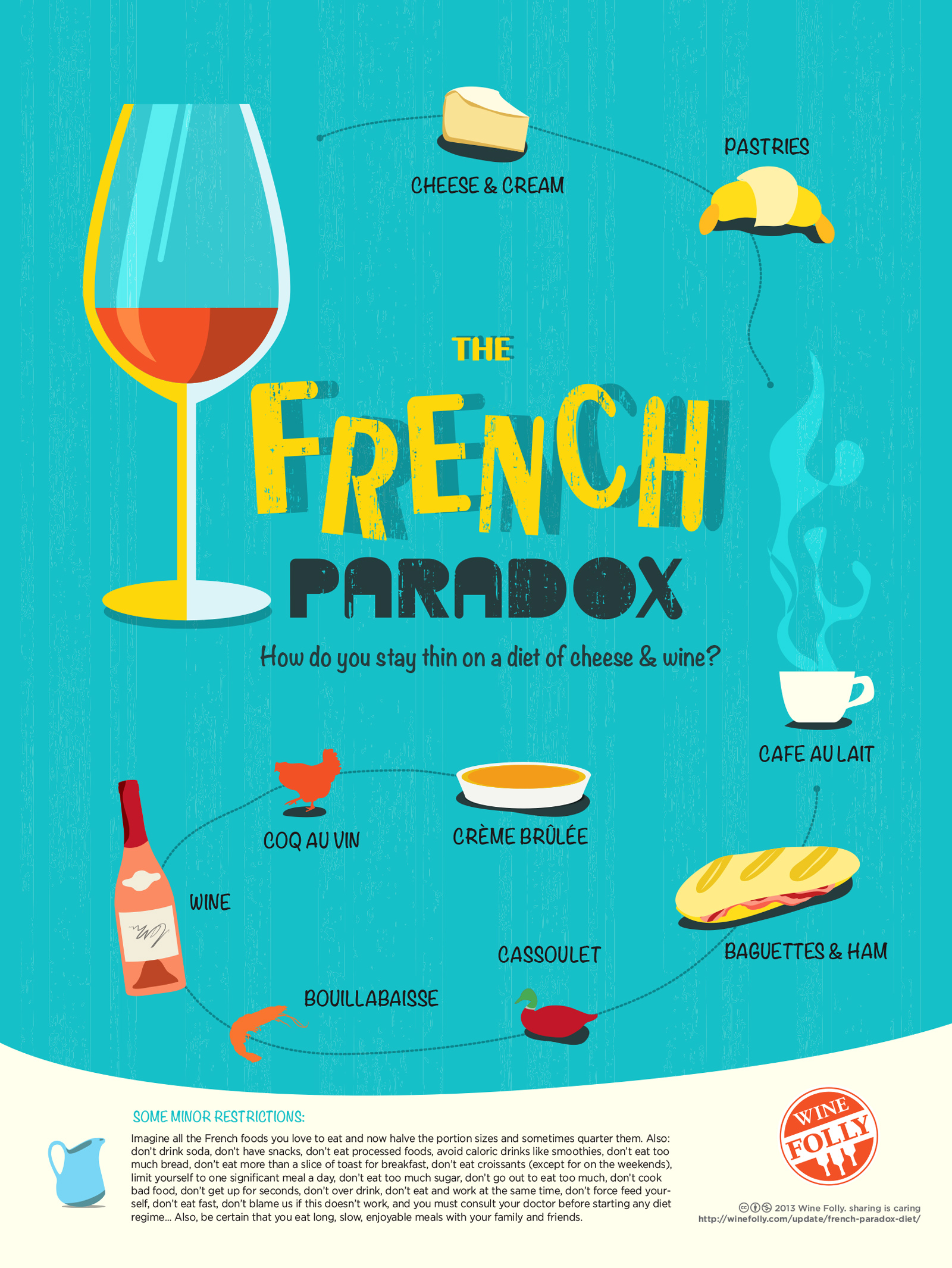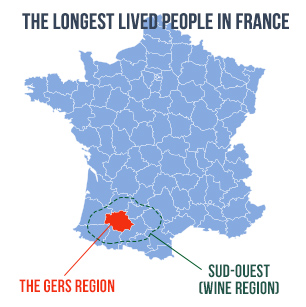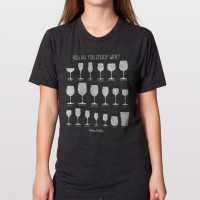As wine and food enthusiasts, we often get challenged with our life choices: our diet, alcoholism and even the money we spend on epicurian delights. And it’s true, some of us are guilty of overindulgence. But what if I could tell you that with intelligent habits, you can taste the most amazing wines (and food) and be awesomely fit? Better yet, what if you could live longer, more memorable lives on a diet rich with wine?
Better yet, what if you could live longer on a diet rich with wine?
I’m not claiming to be an expert on health, but I know someone who is. Doctor Edward Miller is a board certified physican, a clinician, author and researcher. He has vetted our most popular articles on wine and health and is also a certified sommelier. For this article we worked together to map out the secrets of the French Paradox diet. Below you’ll find Dr. Miller’s responses to the most fascinating health contradiction.
What Does ‘French Paradox’ Mean?
The French Paradox is the contradiction between scientific theory and real world facts.

If this reminds you a little of Woody Allen’s film, Sleeper, that’s not surprising. It’s perfectly normal to be filled with disbelief.
The French Paradox
Forget the ‘Paleo’ Diet and Fruitarianism , the next craze is here!

Why Does The French Paradox Work?
Not convinced? Check out how, why and in what context the French diet works for the French people.
Despite regularly eating rich foods like pastries, cheeses and cream sauces, France has a remarkably low obesity rate and this has mostly to do with their eating style. Unlike North Americans who tend to shovel down processed foods as if eating were a race, the French eat leisurely. And because wine and conversation play essential roles in their social ritual, getting a little tipsy on a bottle of Bordeaux actually helps digestion by slowing things down.
They spend more time during the day with food as a focus than do Americans (Kahneman et al., 2010). These findings indicate that there are certain cultural values and practices that allow the French to separate food and the pleasure of eating from the drive to be slim.
Red wine may play a role as well. According to research from Purdue University (Kim 2012), red wine can help keep the pounds off. Scientists there identified a substance in red wine called piceatannol which inhibits the formation of new fat cells and prevents them from developing into mature fat cells. The compound blocks insulin’s ability to store fat. In other studies, researchers found that moderate wine drinkers show the lowest accumulation of abdominal fat among all drinkers.
The Longest Lived Wine Drinkers are in SW France

The longest living people in France are from the southwest area (The Gers) where the regional fare is very high in saturated fats – duck fat for cooking, foie gras, sausage, cassoulet, (pork sausage, goose, duck, pork skin, beans) and cheese. Cardiologists and dieticians would consider these the worst possible diet choices for heart health. However, the local wines (Madiran, Cahors, Bergerac, Saint-Mont) are exceptionally rich in procyanidins (think of procyanidins as saturated fat scrapers). The wines of Sud Ouest France have 2-4 times the amount of procyanidins as most Cabernet Sauvignon and Merlot.
The Gers region in SW France has double the French average of men aged 90 and older (401 vs. 200 per 100,000). The longest living human in recorded history, Jeanne Calment, lived in SE France all of her life and drank red wine daily for over 100 years. When she died in 1997, she was 122 years, 164 days old.
French portions are smaller than American portions.
There is direct evidence in the abundance–moderation contrast of the American and French eating environments. French portion sizes are notably smaller than American portion sizes (Rozin et al., 2003). Part of the “French Paradox” can be explained by the fact that the French eat less than Americans. French portion sizes are smaller in comparable restaurants, in the sizes of individual portions of foods in supermarkets, in portions specified in cookbooks and in the prominence of “all you can eat” restaurants in American dining guides and the idea that one should stuff oneself on the national holiday, Thanksgiving.
The French take longer to eat than Americans.
Ironically, although the French eat less than Americans, they eat for a longer period of time and hence have more of a food experience. French people eat all their meals together at the table. They do not eat in front of the television and they certainly don’t give the children a separate meal. Everyone eats the same food together.
The French cook more than the Americans.
The main difference in grocery stores is that the frozen sections in American stores are much bigger than in France: The market for prepared food is simply not as big in France. Furthermore, TV dinners are a concept mostly unknown to the French culture. The French, in general, tend to put more thought and time into their meals. French people shop on a daily basis and decide what to eat based on what looks good at the market.
When the French drink, they take their time and they drink wine.
In France, wine and food go together like a baguette and a chunk of brie. In other words, the French drink wine with most meals and actually think of it as “food.”
French drink a lot of water instead of sodas.
The French are very fond of mineral water (not caloric sodas and smoothies) and one can find many different types in the stores.
References
Kahneman D., et al: The structure of well-being in two cities: life satisfaction and experienced happiness in Columbus, Ohio; and Rennes, France,” in International Differences in Well-Being, eds Diener E., Helliwell J., Kahneman D., editors. (Oxford: Oxford University Press; ), 16–33, 2010.
Kee-Hong Kim, et al: Piceatannol, natural polyphenolic stilbene, inhibits adipogenesis via modulation of mitotic clonal expansion and insulin receptor-dependent insulin signaling in early phase of differentiation. J Biol Chem 287(14):11566-78, 2012.
Rozin P, et al: The ecology of eating: smaller portion sizes in France Than in the United States help explain the French paradox. Psychol Sci. 2003 Sep;14(5):450-4

About Dr. Edward Miller
Dr. Edward Miller is a board certified physican, a clinician, author, and researcher and has been passionate about wine since taking a wine appreciation course 30 years ago during medical school. He is a regular attendee at The International Wine-Heart Health Summit and is a member of The Renaud Society, an international society of medical professionals investigating the role of wine in health. Dr. Miller is a certified wine sommelier. He is the President of the St. Thomas Wine Club where he leads monthly tastings and educational talks. He and his wife are physicians with Red Hook Family Practice, St. Thomas, US Virgin Islands.
Find his Facebook Group: Don’t Drink Too Much But Don’t Drink Too Little

